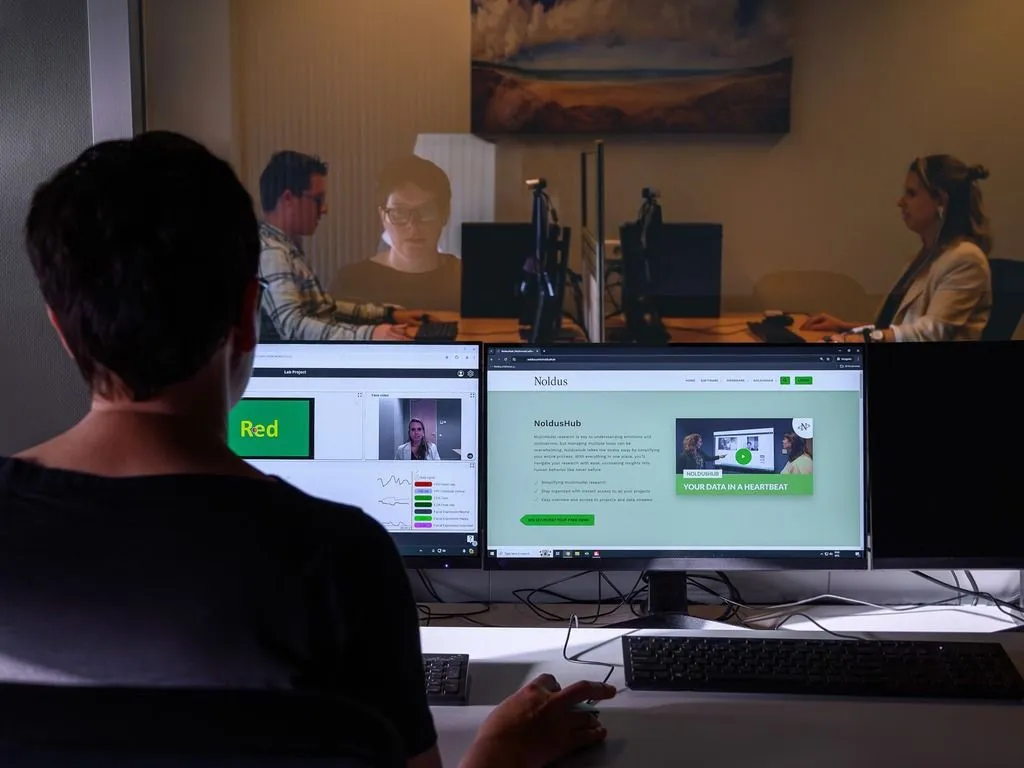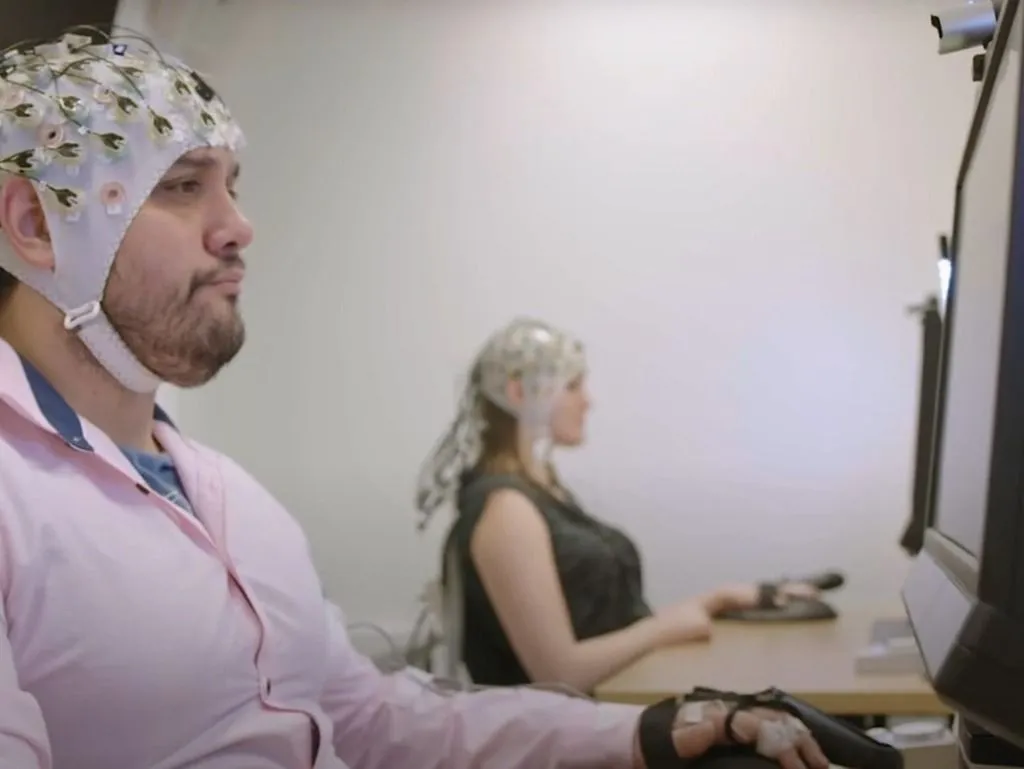Capture participants' focus
Eye tracking
Eye tracking is particularly useful for understanding the cognitive processes that drive attention and decision-making. With eye trackers you can:
- Observe where participants focus their attention on
- Understand how users interact with a system or interface
- Retrieve objective data on visual engagement
What is eye tracking?
Eye tracking is a technique which records what you are looking at. At its simplest, it records if you looked at a given object or not. With more complex analysis, it can give all sorts of information about mental state and the performed tasks.
Eye trackers add substantial power to your lab set-up. They provide precise, real-time data on visual attention and cognitive processes, enabling you to understand how individuals interact with (visual) stimuli. This technology allows for deeper insights into decision-making, learning, and perception.
BLOG: What can you use eye tracking for?Integrating eye tracking with Noldus tools
You can only draw accurate conclusions when your data is in sync. With Noldus' tools, you can seamlessly synchronize multiple data streams, including eye tracking data. That's why Noldus has partnered with Tobii, the global leader in eye tracking technology.
Also check out our other partners for integration of EEG and physiological data.

NoldusHub
All-in-one system for multimodal research
Viso
AV tool to capture participants' behaviors

The Observer XT
Complete software for behavioral research
Research lab combines eye tracking and facial expression analysis
To focus on professionalization of teachers, Prof. Dr. Brigitte Latzko and Dr. Sandra Dietrich upgraded their lab at the Faculty of Education, Leipzig University in Germany. Several tools were installed, such as a Tobii eye tracker, in order to conduct reading research.
How do people process information?
An eye tracker is useful for understanding how your eyes move across text, such as where you pause, re-read, or skip parts. It helps researchers see which words or sections are difficult, how fast you process information, and how your reading strategies differ from others.
Stay ahead in behavioral research!
Subscribe to Noldus Newsline
- Discover innovations – Be the first to know about new tools and software to advance your research and get insights that help you stay ahead.
- See real research in action – Get inspired by real-world studies from our community, discovering fresh approaches for your work.
- Access exclusive perks – Receive early updates on promotions, product releases, and events crafted for you.
EyeReader | Webcam-based eye tracking technology
Free white paper
- Methodology and accuracy behind the technology
- Validation example for a specific application
- How to start using it in your own project
Benefits of eye tracking
- See what your test participant is looking at, and is not looking at, or missing during interaction
- Get rich, quantitative, and reliable data for attention, mental load, and arousal
- Combine eye tracking videos and other sources like FaceReader™, FaceReader Online, or data acquisition systems with The Observer® XT
- Benefit from a completely integrated system
"We chose the eye tracker because we want to include some reading research. For this, we need a really high resolution to see where people are looking at the exact moment."
Dr. Sandra Dietrich
Leipzig University, Germany
Reading materials
3 Examples of eye tracking lab set-ups
Can you imagine, in the 19th century the study of eye movements for instance was done by means of direct observations? Luckily, nowadays eye tracking can easily be automated and integrated.
Eye tracking and emotion analysis
By observing eye movements, as well as gaze, and facial expressions, we can learn more about subconscious processes. It offers insights into user experience, customer preferences, desire, and appreciation.
How to increase attention in commercials for Gen-Z
Generation Z has the shortest attention span for commercials, yet they are becoming an increasingly important market segment. Understanding what captures their interest and how to engage them is crucial.
The power of multimodal research
By implementing multimodal research, scientists are hoping to gain a more complete and nuanced understanding of human behavior than is possible through the examination of any single modality.
Don't know where to start?
We're happy to help
Book a meeting for an online or onsite session.
Together, we can discuss you research requirements and come up with the best solution!